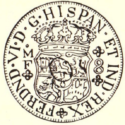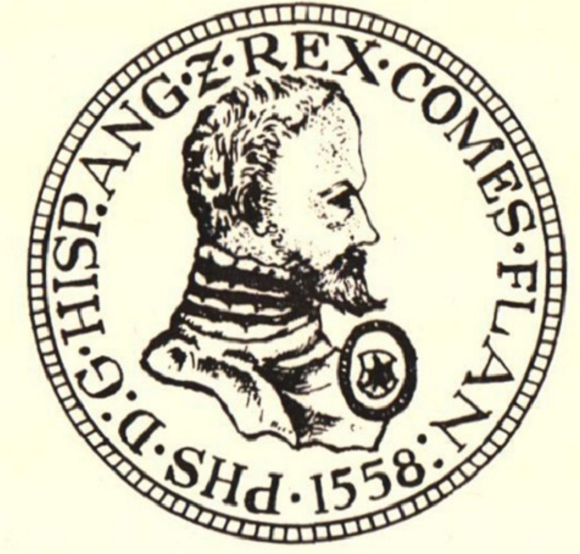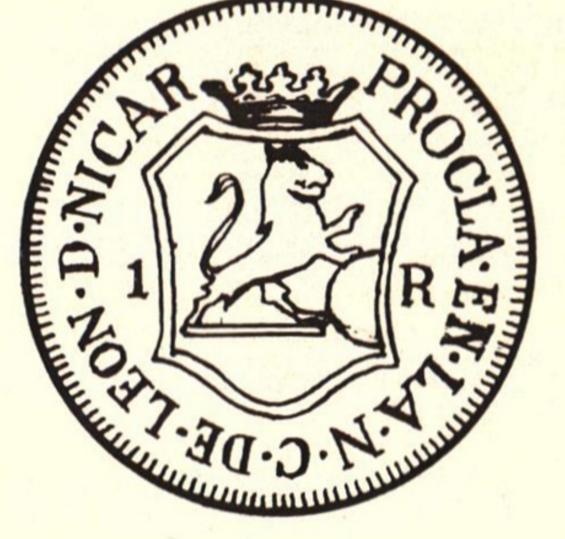A Scion Society of The Baker Street Irregulars

The Case of the Lion Countermark (1953)
Dramatis Personae: Sherlock Holmes and his friend, Dr. Watson. Scene: Sherlock Holmes’ study in London.
(Sherlock holds in one hand a registered package that has been opened and in the other hand, a large 8 reales silver coin of the Mexico mint countermarked with a very aristocratic looking lion rampant. )

Dos Mundos with lion countermark
SHERLOCK: Watson, for the first time, we have at last a “corpus delicti” which we may examine minutely at our leisure and which will give us a definite clue to this most interesting and extremely puzzling case. I am confident however that this coin never saw the sunshine of Nicaragua in spite of what both Heiss, Herera and others say about it. In the first place, why should anyone place another “Spanish” royal lion where two honest-to-goodness royal “Spanish” lions are already ramping their way in the ether towards the west? The coin is already legal tender and how could another royal SPANISH (?) lion add to its reliability and acceptability in Nicaragua? Hand me my magnifying glass so that I can examine that intruder more minutely. . . Why, Watson, this does not look like a Spanish lion! It looks to me like one of those lions with a slick glossy coat and curling mane and a tail with its tassel curved backward and not forward as in the case of its two Spanish companions — just like those lions that roamed around in the marshes of the Low Countries! Yes, very much like that Brabant lion in an oval countermark on that silver crown of
Philip the Second dated 1558 which we purchased last month in Piccadilly.

Daalder of Brabant, 1558
WATSON: Yes, remarkably like that old 16th century countermark, but, Sherlock, the “dos Mundos” is an 18th century coin?
SHERLOCK: I do not think that any colonial die sinker could have modeled such a well engraved lion. Of course, the two Gils of the Mexican Mint could have had a hand in it as they were about the best colonial engravers that Spain ever sent to her far-away colonial mints. No, Watson, unless they were taking a vacation, they never would have left the Mexican mint even for a couple of months as there was no mint in Nicaragua at that time and what enjoyment would there be for a master engraver like Gil to spend a vacation where there was no mint in which he could wander around. You know, Watson, even an old master may sometimes be a victim of mistaken judgment and of excessive enthusiasm. Take Herera, that grand old man. In his El Duro he ascribed three duros to a non-existing Nicaragua mint, coins which, I believe, are now recognized as being of South and not of Central American provenance and their NR is not NICA-RAGUA but Nuevo Reino! Could he not have been mistaken when, following Heiss, he ascribed the lion duro to Nicaragua?
WATSON: But, Sherlock, was there not a medal or token struck for but probably not in Leon, Nicaragua, which shows clearly a lion rampant on the reverse?

SHERLOCK: Yes, Watson, a lion, yes, a lion, and a ramping lion at that, but let us take it out of my cabinet and examine it closely. You will note, dear Watson, that in the Leon coin the lion does ramp but it ramps on a plank and is pushing a huge ball from the plank into the blue, piratical Caribbean Sea. Furthermore, he does not ramp towards the west as all respectable Iberian lions usually ramp but undoubtedly towards the east. Therefore, the lion of this 8 reales, if we are to believe in heraldry, is definitely not the ball-pushing lion of “la noble ciudad de Leon” in Nicaragua and is therefore not from the capital city of Nicaragua. That, Watson, is the “quid, ” finally and definitely solved. I think that we may now state that the lion countermark never saw the skies of Nicaragua in spite of what Heiss, Herera and other famous cataloguers have said. Furthermore, I would wager that the engraver of the die for the countermark never left Europe and never saw any overseas colony.
WATSON: But, Sherlock, how does this help us? We have not yet solved the problem of where the coin does come from.
SHERLOCK: Right you are, Watson, but that is the “quod” which we shall consider later. We have at least solved an important part of the mystery and, furthermore, I do not want to state now where it does come from because if I do, how can I collect the royalties on the sequel to this case which I shall publish later entitled: “The Case of the Real Batou of Old Soumanap?” However, Watson, I am glad that we finally obtained this old Lion “Dos Mundos, ” as it is a very interesting coin and is considerably more rare than it was formerly believed to be.
WATSON: But, Sherlock, how about the ancient archives of Leon and of Madrid? Could they not give something basic on the subject?
SHERLOCK: That, dear Watson, is purely elemental; just another one of those beastly, indefinite “quods” which may or may never materialize. Let’s take a walk, Watson. By the way, if old Don Pepe asks you how much I paid for the old silver disk, do not tell him. Just whisper, very low, “an eye of the face. “”
(Exit Sherlock Holmes and his friend from the foggy atmosphere of his study to the thicker fog of a London night. )
*”un ojo de la cara”
This article first appeared in the March 1953 issue of The Numismatist (pages 245-247), official publication of the American Numismatic Association, www.money.org

Sorry, comments are closed for this post.